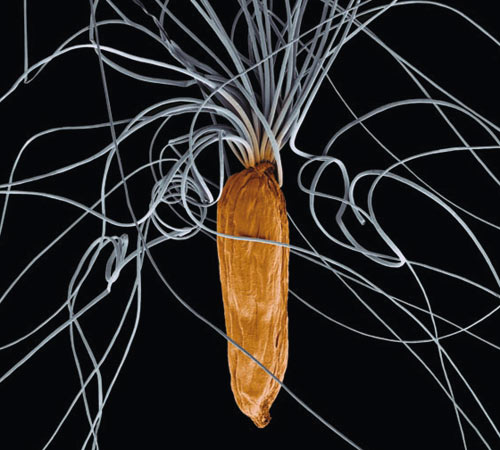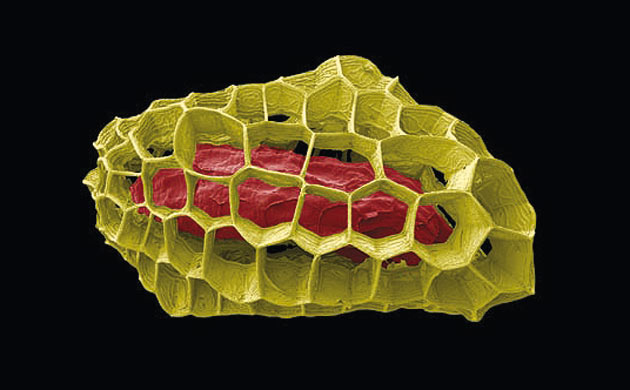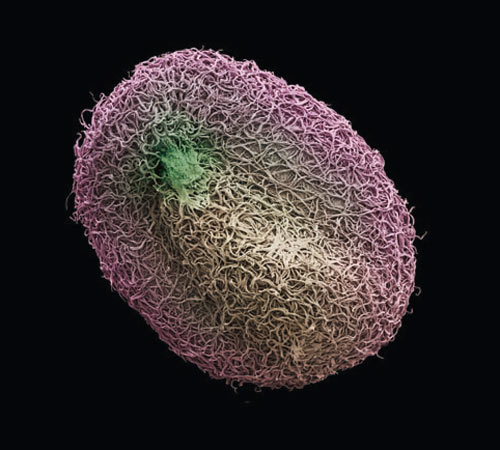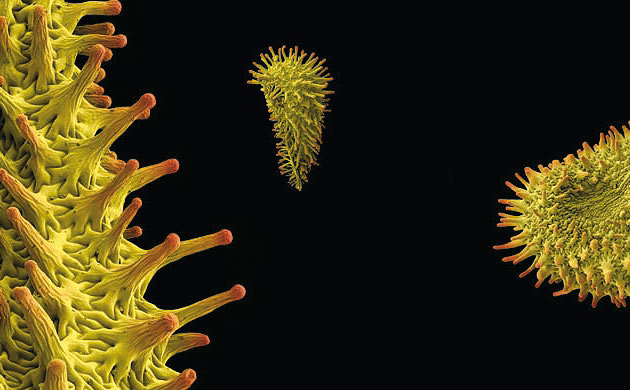Without plants there could be no life on earth, and yet every day another four plant species face extinction. Kew's Millennium Seed Bank partnership has successfully banked 10% of the world's wild plant species, and have set their sights on saving 25% by 2020.
This story below is taken from the Kew Gardens (UK) website news and illustrates the important role that can be played by those dedicated to preserving species.
click on 18 May 2010 to read more!
World's smallest waterlily brought back from the brink of extinction at Kew
Kew’s top propagation ‘code-breaker’, horticulturist Carlos Magdalena, has cracked the enigma of growing a rare species of African waterlily. The 'thermal’ lily (Nymphaea thermarum) is believed to be the smallest waterlily in the world, with pads that can be as little as 1 cm in diameter.
A rare species of African waterlily, the 'thermal’ lily (Nymphaea thermarum) has been propagated at Kew (Image: Andrew McRobb, RBG Kew).
Kew is one of those places that offers a sense of hope in a time of relative doom and gloom about the state of the natural world, where individuals, by doing practical things with plants, can make a real difference to biodiversity conservation.Professor Stephen Hopper, Director of the Royal Botanic Gardens, Kew
In a fitting success story to celebrate International Day for Biological Diversity on 22 May 2010, Carlos Magdalena, a horticulturist at Kew, has discovered the secret of growing a rare species of African waterlily – bringing it back from the brink of extinction.
Struggling to survive in the wild
This ‘thermal’ lily (Nymphaea thermarum), so named because it grows in freshwater hot springs, was discovered in 1987 by German botanist Professor Eberhard Fischer of Koblenz-Landau University, Germany. It was known from just one location in Mashyuza, Rwanda, in the south west of the country. However, it disappeared from this location about two years ago due to over-exploitation of the hot spring that fed its fragile habitat. Water was prevented from reaching the earth’s surface resulting in the desiccation of the few square metres where this species grew, and no plant is known to have survived in the wild.
Luckily, Professor Eberhard Fischer realised that the species was in jeopardy and he transported a few specimens to Bonn Botanic Gardens soon after its discovery. At Bonn, horticulturists were successful at preserving these valuable specimens and indeed they lasted for more than a decade. However, the species proved extremely difficult to propagate.
Carlos Magdalena holding Nymphaea thermarum Image: Andrew McRobb, RBG Kew
Trial and error
As a result of a conservation plant exchange between the institute at Bonn and Kew, a handful of seeds and seedlings reached Kew in July 2009. All other known waterlily species start life as submerged plants, until large enough to send pads to the surface. ThereforeNymphaea thermarumseedlings were initially grown submerged like any other waterlily. But, at both botanic gardens, this method was unsatisfactory. Seedlings were barely clinging on to life and did not develop to adult stages.
Carlos, who has a track record in cultivating the rarest and most difficult plants, took on the challenge of learning the secrets of successfully propagating Nymphaea thermarum.
Over many months he ran a series of trials involving a range of temperatures, water hardness, pH and depth. Plants grown in harder water at shallower depths seemed to develop further. However, no plant reached maturity, which was disappointing as it seemed that every possible permutation known to have an influence on aquatic plant growth had been tested. Everything except the concentration of carbon dioxide and other gases, such as oxygen, which may be different in the environment where the plant grows naturally. Perhaps there was something crucial about the plant's natural habitat of which he was not aware?
Waterlilies are among the most ancient of flowering plants. The 'thermal' waterlily could provide information about the evolution of flowering plants as it is truly unique. Our immediate priority is the ex situ conservation of the 'thermal' waterlily and thereafter, if the natural flow of water in its historic location can be restored, plants grown at Kew can then be reintroduced into the wild.Carlos Magdalena, horticulturist at Kew
Cracking the code
Returning to the original German description of the species and its natural habitat supplied the final clue:
“it grows in damp mud caused by the overflow of a hot spring. Water reaches the surface at 50 °C but the plant colonizes an area where the water has cooled to a temperature of 25 °C”.
This meant that, unlike all other known waterlily species,Nymphaea thermarum did not grow submerged in the deep waters of lakes, rivers or marshes. The revelation was that this small, extremely rare and unusual species, with a spread of only 5 to 20 cm, grows in the damp conditions at the edge of a thermal hot spring – and this was the vital clue needed to crack the code.
With this knowledge Carlos did one final trial. He placed seeds and seedlings into pots of loam within small containers filled with water, thus keeping the water at the same level as the surface of the compost, at a temperature of 25 °C. In this way, the last remaining individuals of the species could be exposed to the concentrations of carbon dioxide and oxygen in the air.
Seeing the plants flower for the first time
To his surprise and joy, the plants started to improve and after a few weeks, eight plants began to flourish, growing to maturity with thicker, greener and wider leaves. In November 2009, Kew’s collection of Nymphaea thermarum flowered for the first time.
Carlos Magdalena says,”When I received this donation from Bonn, I realised how important it was for the survival of the species to find a way of growing them successfully. At first they didn’t seem to respond to any of the traditional ways of treating these plants and they remained weak and failed to develop and eventually died. It was only when I searched a little deeper that the key I needed came to the surface. Now we have over 30 healthy baby plants growing here at Kew and some are producing seeds so soon we may have an army of these tiny waterlilies here at Kew. Its future in botanical collections seems secured for the long term.”
Watch the video | Read the Director's latest blog post

The 'thermal’ lily (Nymphaea thermarum), a rare species of African waterlily, was recently brought back from the brink at Kew (Image: Paul Little, RBG Kew).
































